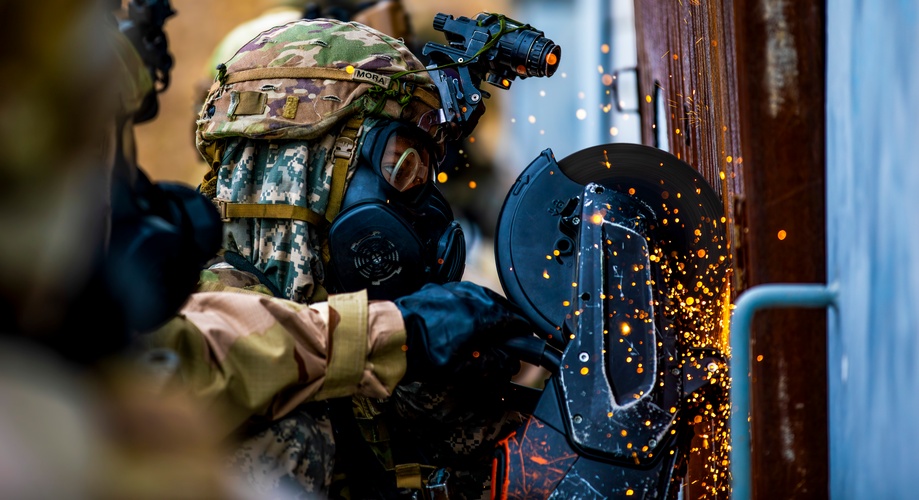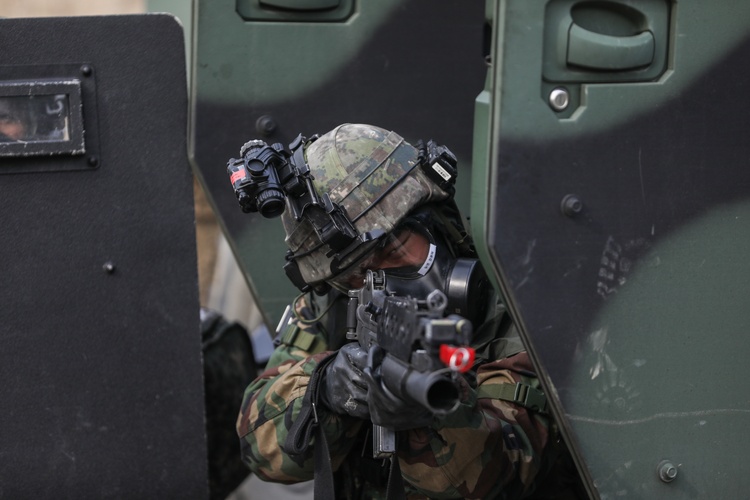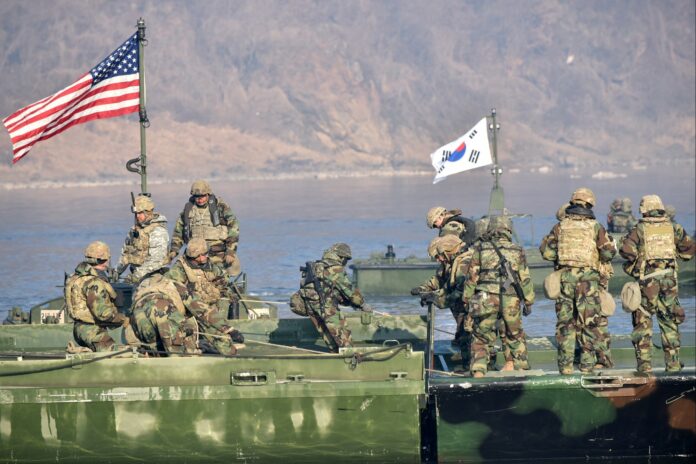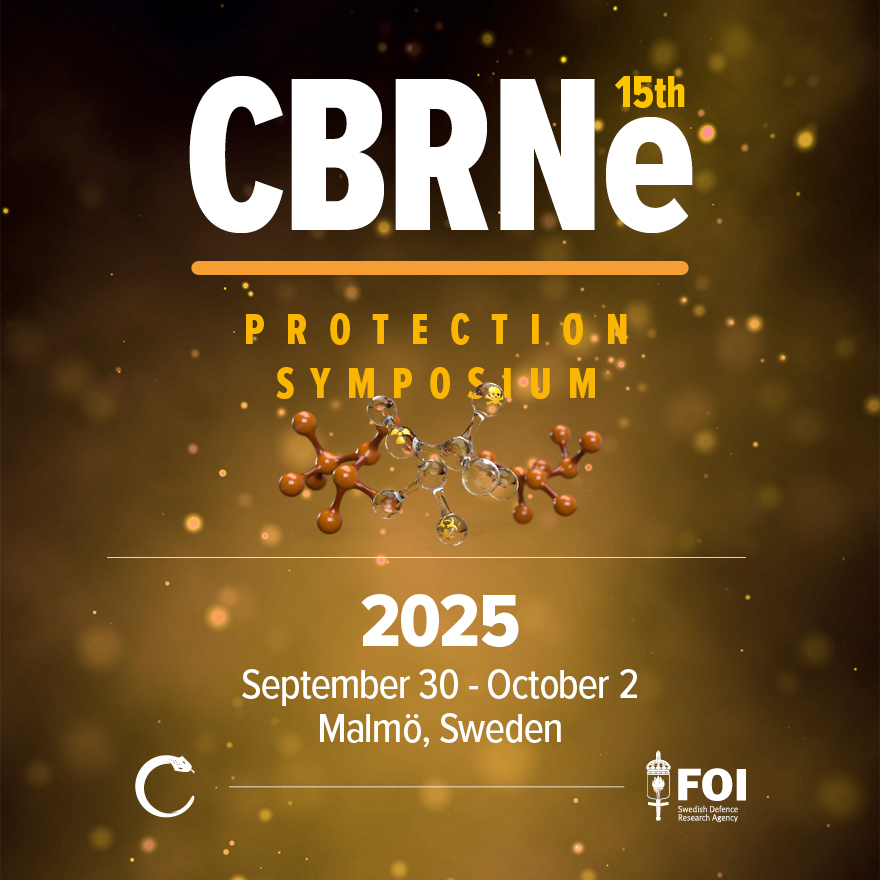By LTG (Ret.) Chun In-bum
Chemical weapons should not be considered outdated or ineffective, writes LTG (Ret.) Chun In-bum. They still offer a wide spectrum of tactical options, from targeted assassinations and acts of terror to battlefield applications that can neutralize enemy forces without destroying infrastructure.
Although there has never been a formal admission that the Republic of Korea possessed chemical weapons, the geopolitical landscape during the Cold War suggests that the possibility cannot be dismissed. South Korea, facing existential threats from its northern neighbor and lacking nuclear weapons of its own, would have found it strategically rational – if not necessary – to consider alternative forms of deterrence. Chemical weapons, which can offer asymmetrical capabilities, may well have been part of that calculus.
With the signing and ratification of the Chemical Weapons Convention (CWC) in 1997, South Korea firmly aligned itself with the global non-proliferation community. The CWC, one of the most comprehensive arms control treaties in existence, prohibits the development, production, stockpiling, and use of chemical weapons. South Korea, as a responsible member of the international community, has since adhered to the obligations set forth by the CWC. Yet the story does not end there.
The global security environment has changed dramatically since the Cold War. Nuclear weapons remain at the apex of military deterrence, and precision-guided munitions now dominate the battlefield. Against this backdrop, chemical weapons may appear outdated or ineffective. Many policymakers and even military strategists have relegated them to a bygone era of trench warfare and gas masks. But this view underestimates both the strategic utility and the enduring threat posed by chemical agents – especially nerve agents – in modern conflict and covert operations.

“Intermediate” Weapons
Unlike nuclear weapons, chemical weapons can be used in more flexible and deniable ways. They offer a wide spectrum of tactical options, from targeted assassinations and acts of terror to battlefield applications that can neutralize enemy forces without destroying infrastructure. A nerve agent can incapacitate a platoon or disable a facility, rendering it temporarily unusable but structurally intact – a significant difference from the scorched-earth aftermath of nuclear strikes. This unique utility ensures that chemical weapons remain a tool of interest for rogue states, terrorist groups, and even state actors seeking plausible deniability.
It is precisely because of their “intermediate” nature – more destructive than conventional weapons, but less catastrophic than nuclear arms – that chemical weapons remain an insidious threat. Their use is tempting in scenarios where the aggressor seeks maximum impact with minimal international backlash. This makes them ideal instruments for gray zone warfare, covert operations, and proxy conflicts.
Indeed, the world has seen numerous examples in recent years that underscore the enduring relevance of chemical weapons. The 2017 assassination of Kim Jong-nam, the estranged half-brother of North Korean leader Kim Jong-un, shocked the world. Carried out in a Malaysian airport using VX nerve agent, the operation was a textbook example of how a chemical weapon can be employed for targeted, high-profile political violence in a public space. This brazen act not only demonstrated capability but also intent – a willingness to use such weapons in violation of international law and norms.

National Security Priorities
Even outside of the Korean context, similar incidents have occurred. The poisoning of dissidents and defectors in Europe, often using chemical or radiological agents, illustrates that certain actors are willing to deploy these tools on foreign soil to eliminate enemies and send chilling messages. The Syrian civil war has also been marred by repeated use of chemical weapons against civilians, in violation of global treaties and in defiance of international condemnation.
Yet despite these glaring examples, chemical weapons remain a second-tier concern for many governments. National security priorities are increasingly dominated by nuclear proliferation, cyber warfare, and more conventional terrorist threats involving explosives, firearms, or sabotage. As a result, chemical and biological defense programs often suffer from underfunding, neglect, and political disinterest. The expertise and infrastructure required to detect, contain, and neutralize chemical attacks remain highly specialized and underutilized.
Professional Communities, Industry Partnerships, Public Awareness
Nevertheless, there is hope. A small but dedicated community of professionals – scientists, military personnel, public health officials, and emergency responders – continues to prepare for what many consider an “impossible mission”: protecting the public from the specter of chemical and biological attack. These professionals operate in relative obscurity, often with limited resources and little public recognition. Yet their work is critical. They develop detection technologies, decontamination methods, protective equipment, and response protocols that could one day make the difference between a contained incident and a mass-casualty disaster.
These efforts are often supported by partnerships with industry leaders who bring technical expertise, manufacturing capacity, and innovation to the table. Companies specializing in biotechnology, materials science, and data analytics play an increasingly important role in creating systems that can identify, track, and mitigate chemical threats. From advanced sensor networks to AI-enhanced decision tools, these innovations are expanding the toolkit available to first responders and defense agencies.
Still, technological solutions are not enough. The most important pillar of chemical and biological defense is public awareness and education. An informed population is better equipped to recognize the signs of a chemical incident, respond appropriately, and support mitigation efforts. Public drills, educational campaigns, and transparent communication channels are all necessary to foster a culture of readiness. Unfortunately, this type of awareness is often neglected or only pursued in the aftermath of a tragedy.

Leadership Matters
This is where leadership matters. National leaders, policymakers, and opinion shapers must take a more proactive role in elevating the importance of chemical and biological preparedness. This does not mean fostering fear or panic – it means engaging in clear-eyed planning and prudent investment. Just as we prepare for natural disasters, pandemics, and cyberattacks, so too must we prepare for chemical threats, no matter how remote they may seem.
Building this preparedness requires more than just government action. What is needed is a worldwide network – a coalition of professionals, industries, and institutions dedicated to sharing knowledge, building capacity, and coordinating response mechanisms. This network must transcend borders and bureaucracies. It must foster a culture of collaboration, where scientists in one country can share insights with emergency responders in another, and where new discoveries can be quickly integrated into global best practices.
Such a network already exists in embryonic form. Organizations like the Organisation for the Prohibition of Chemical Weapons have laid a strong foundation, but much more is needed. National chemical and biological defense units must be better resourced and more deeply integrated with their counterparts abroad. Joint exercises, multinational training programs, and shared stockpiles of equipment and antidotes can all enhance global readiness.
Moreover, the private sector must not be treated merely as a vendor, but as a full partner. Industry leaders possess technologies and manufacturing capabilities that governments may lack. They also can innovate at speed, especially when incentivized through contracts and public-private partnerships. In a world where chemical threats can emerge suddenly and in unexpected places, the agility and expertise of the private sector is indispensable.

Preparedness is a Responsibility
Finally, we must recognize that the fight against chemical weapons is not just a technical or military challenge – it is a moral and strategic imperative. The use of such weapons violates fundamental principles of humanity and international law. Allowing these weapons to persist in the shadows, unchecked and unchallenged, erodes the norms that underpin civilized behavior and undermines global security.
In the end, the goal is simple but urgent: to safeguard our families, our communities, and our shared future. The threat may not always be visible, but it is always present. Let there be no mistake – chemical weapons are still out there. And while we cannot eliminate every danger, we can prepare. We can invest. We can educate. And we can build the networks and capabilities required to respond when the unthinkable happens.
Because preparedness is not an option – it is a responsibility.
Lieutenant General (Ret.) Chun In-bum is a Senior Fellow for the Association of the United States Army and MIG Alley Chapter of the U.S. Air Force Association, Advisory Member of the National Policy Planning Committee, and a Board Member of the Korean Animal Welfare Association. He commanded the 27th Infantry Division and was the Senior Member of the UN Command Military Armistice Commission. In November of 2013, he was promoted to Lieutenant General and was assigned as the Commander of the ROK Special Warfare Command. Lieutenant General (Ret.) Chun retired from active duty as of July 31, 2016.





